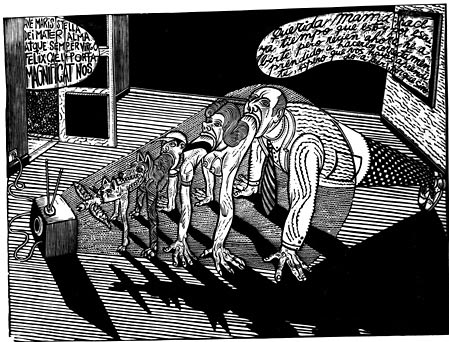

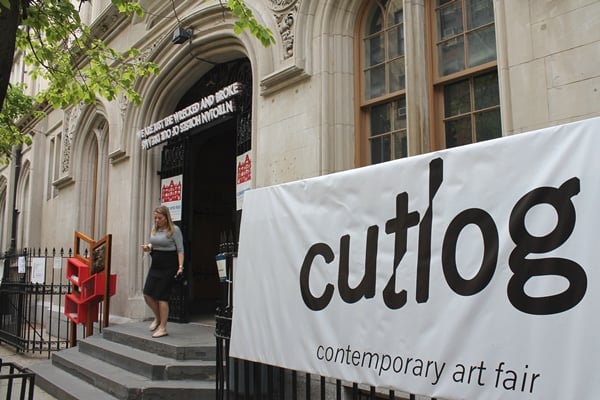
The entrance to Cutlog New York 2014
Photo: Ben Davis
A mystery solved at the launch of Cutlog Wednesday morning, the Paris-born satellite of Frieze New York, in town for its second year at The Clemente on the Lower East Side. I’ve never been exactly sure what the name “Cutlog” is supposed to evoke. It sounds like… a lumberjack bootcamp? Well, as it turns out, it’s a deliberate jumble. According to Bruno Hadjadj—artist, dealer, and Cutlog founder—the name was the product of a Surrealist word game.
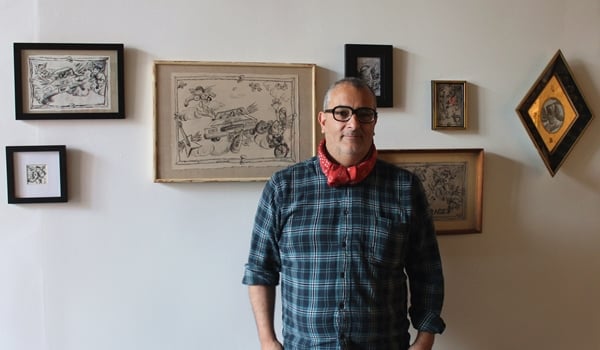
Bruno Hadjadj, with his art at Galerie Spree during Cutlog
Photo: Ben Davis
That’s fitting. The fair is a bit of a jumble. The funky mix-and-match vibe of the 40-odd exhibitors spread across the two floors of the lovably unvarnished space doesn’t exactly rise to the level of Surrealist epiphany; but the selection is charmingly eclectic. And I say that knowing full well that calling a satellite fair “funky” or “eclectic” is kind of like a realtor calling a tiny apartment “cozy.” But Cutlog really is as unpretentious as an art fair can be and still be a fair (though, for $15 admission, people may actually expect some pretension).
A lot of it is more or less light fun, and is designed to be so. The second floor is anchored by Anthony Haden Guest, the well-known art writer and all-around gadfly, in an installation curated by Tony Guerrero for the Whitebox Art Center (neighbor of the fair). It consists of a variety of his droll text art pieces, whimsical poems and “The iPhone Photos,” a series of woozy phone pics of a night on the town, framed by Haden Guest’s scribbled commentary. They’re fun. Cutlog is also showing some animated short films by Haden Guest (made in collaboration with Christopher Fequiere) in the fair’s video gallery. The guy is like the presiding deity here.
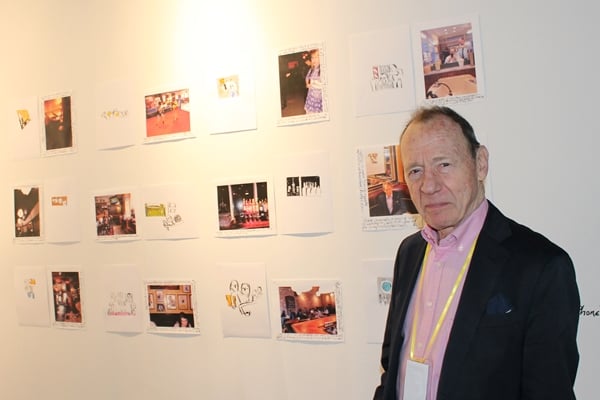
Anthony Haden Guest and his art, at Whitebox Art Center (Booth B1)
Photo: Ben Davis
Elsewhere, there’s voluble new media artist G.H. Hovagimyan‘s “augmented reality” painting—Joseph Albers-style abstract canvasses that sprout 3D geometric forms and floating text when viewed through an iPad; Joshua H. Knoblick’s Thank You, Now Get Out, a hanging mobile sculpture made of interlocking aluminum pieces cut to look like Internet WAV files (the particular sound they map happens to be the closing announcement from Art Basel in Miami Beach—hence the name); and French artist Clara Feder‘s Wall of Temptation installation, which offers you a free lottery ticket, then challenges you to “resist temptation” by pinning it to a canvass instead of scratching it off to see if you hit the jackpot.
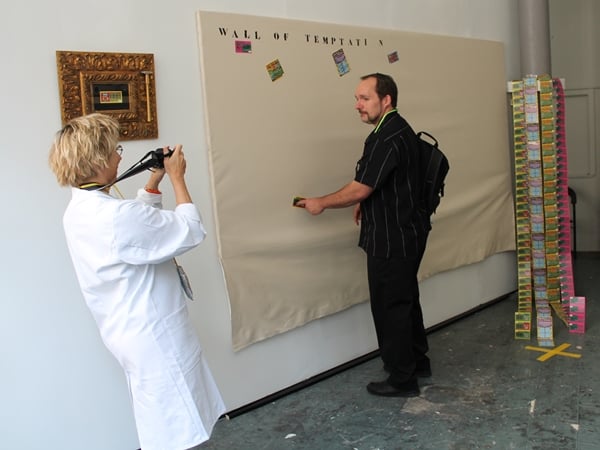
Clara Feder [left] photographs a visitor sticking a lottery ticket to her “Wall of Temptation”
Photo: Ben Davis
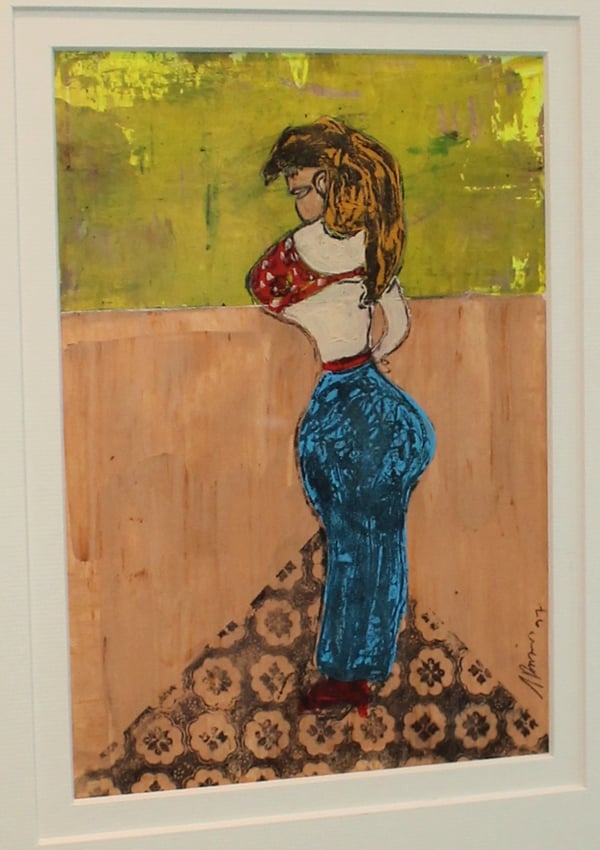
Azizan Paiman’s “Issue now and then – Manal Kita” (1997) at Fuman Gallery
Photo: Ben Davis
My main goal in going to Cutlog was to write a review featuring something that I really liked (why else go?). I found that at the booth of Susan Leaming, from New Canaan, Connecticut. Leaming is showing large linocuts by Argentine artist Alfredo Benavidez Bedoya (born in 1951, he won a Guggenheim Fellowship back in 1999). They’re a knockout, all crisp black-and-white, with sharp individual details that pile up into patterns. Bedoya’s style of Surrealist social commentary is wacky and angry and weird in the right ways: the most excellently outrageous is Teoría sobre los animales domésticos, an image where a man vomits a woman, who vomits a child, who vomits a dog, who vomits a cat, who vomits a bird—all of them watching the TV.

Alfredo Benavidez Bedoya’s “Teoria sobre los animales domesticos”
In a way, I thought to myself: Who is this guy? Why am I only finding him at Cutlog in a cramped back room? But, on the other hand, that also made it feel kind of perfect.
Cutlog New York 2014 continues at the Clemente through May 11.





